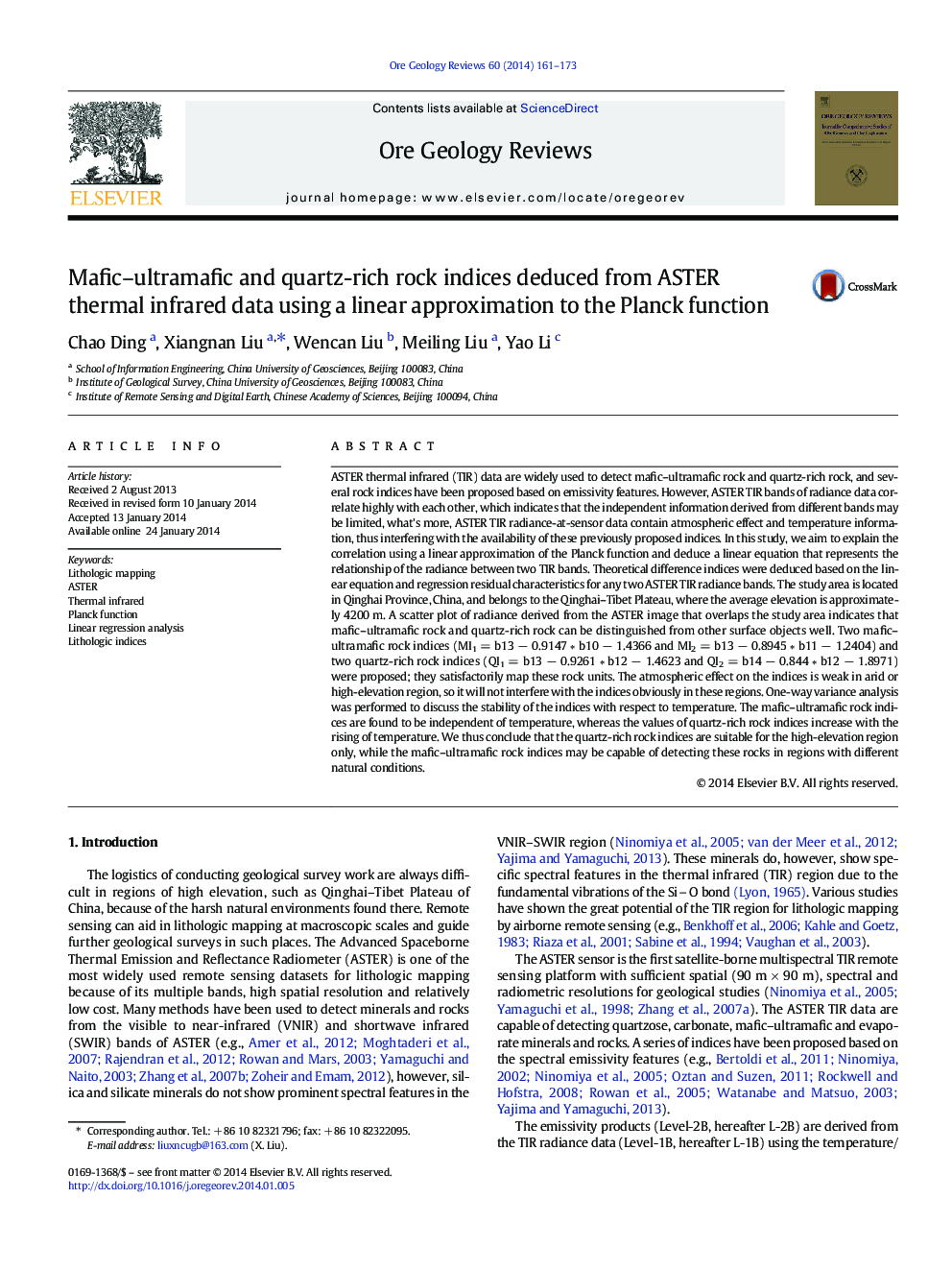| کد مقاله | کد نشریه | سال انتشار | مقاله انگلیسی | نسخه تمام متن |
|---|---|---|---|---|
| 4697301 | 1637243 | 2014 | 13 صفحه PDF | دانلود رایگان |

• The relation of radiances between two ASTER TIR radiance bands was deduced.
• Two categories of rock indices were proposed based on the linear equation.
• The availability and universality of the indices were discussed.
ASTER thermal infrared (TIR) data are widely used to detect mafic–ultramafic rock and quartz-rich rock, and several rock indices have been proposed based on emissivity features. However, ASTER TIR bands of radiance data correlate highly with each other, which indicates that the independent information derived from different bands may be limited, what's more, ASTER TIR radiance-at-sensor data contain atmospheric effect and temperature information, thus interfering with the availability of these previously proposed indices. In this study, we aim to explain the correlation using a linear approximation of the Planck function and deduce a linear equation that represents the relationship of the radiance between two TIR bands. Theoretical difference indices were deduced based on the linear equation and regression residual characteristics for any two ASTER TIR radiance bands. The study area is located in Qinghai Province, China, and belongs to the Qinghai–Tibet Plateau, where the average elevation is approximately 4200 m. A scatter plot of radiance derived from the ASTER image that overlaps the study area indicates that mafic–ultramafic rock and quartz-rich rock can be distinguished from other surface objects well. Two mafic–ultramafic rock indices (MI1 = b13 − 0.9147 ∗ b10 − 1.4366 and MI2 = b13 − 0.8945 ∗ b11 − 1.2404) and two quartz-rich rock indices (QI1 = b13 − 0.9261 ∗ b12 − 1.4623 and QI2 = b14 − 0.844 ∗ b12 − 1.8971) were proposed; they satisfactorily map these rock units. The atmospheric effect on the indices is weak in arid or high-elevation region, so it will not interfere with the indices obviously in these regions. One-way variance analysis was performed to discuss the stability of the indices with respect to temperature. The mafic–ultramafic rock indices are found to be independent of temperature, whereas the values of quartz-rich rock indices increase with the rising of temperature. We thus conclude that the quartz-rich rock indices are suitable for the high-elevation region only, while the mafic–ultramafic rock indices may be capable of detecting these rocks in regions with different natural conditions.
Journal: Ore Geology Reviews - Volume 60, July 2014, Pages 161–173